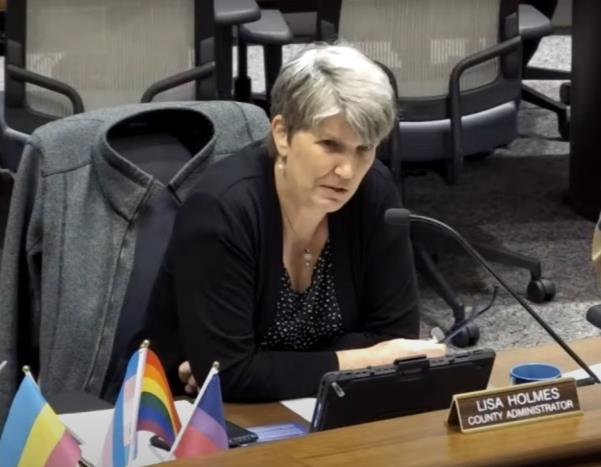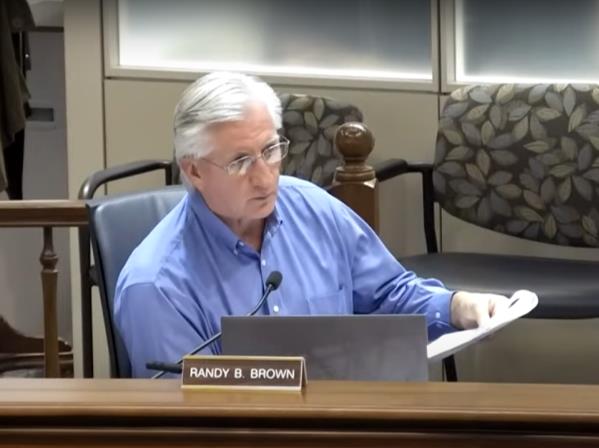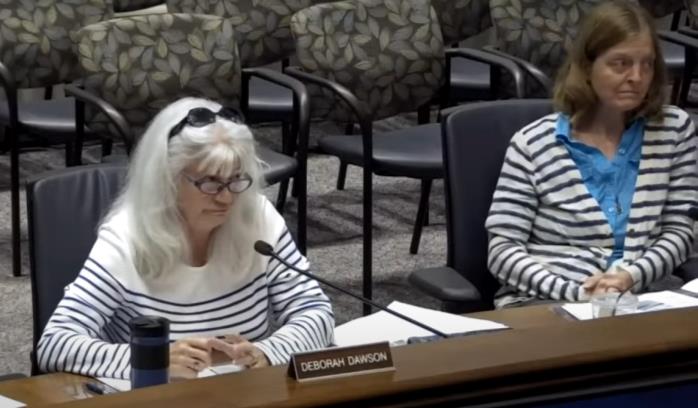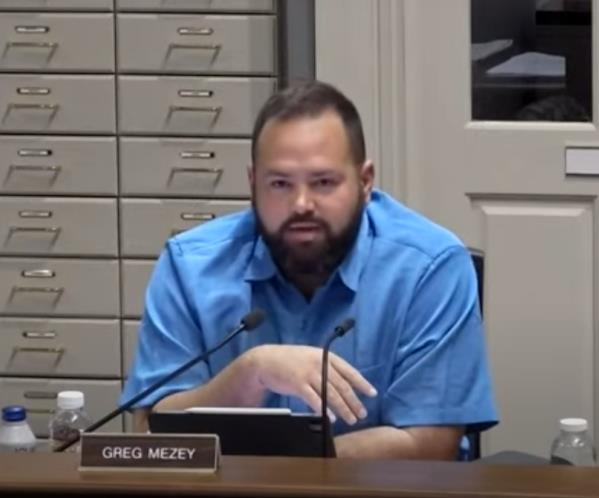New policy; new reserves snarl Tompkins’ budgeting process
Reporting and analysis by Robert Lynch; August 27, 2024
Equate it to your own finances. It’s the best way to explain it.

You’ve got tens of thousands parked in a traditional checking account; not a smart choice. So first you switch to no-fee checking to escape those pesky, per-check charges. It’s a good first step, although, it requires you maintain a hefty minimum balance. Next, you apply a little self-discipline. You move some of the cash to your child’s college fund or put it into an IRA. Wise, of course, but it locks those funds up until you withdraw them for their intended purpose. You’re just as financially rich, but now you’re also cash-poor. Oh, and by the way, you’re spending more each month on life’s necessities than your paycheck brings in. This can’t go on forever.
That, in essence, is where Tompkins County stands right now. And to a large extent, its administrators and lawmakers have only themselves to blame.
For the better part of an hour Tuesday night, August 20th, County Administrator Lisa Holmes briefed those seated beside her at the Daniel Tompkins Building’s big-oval about her county’s fund balance—essentially, its savings account— and fielded legislators’ questions about where it stands. Holmes’ message carried about the same amount of glee as your average Donald Trump speech. The fund balance is fat in theory, but starving in fact. Legislators can’t spend most of their eight-figure surplus without breaking the rules.
“I think our fund balance issues are self-imposed,” Randy Brown, one of Enfield’s two county legislators, informed the meeting that night. He happens to be right.
Back last December, Brown was among five legislators who opposed Tompkins County enacting its new Fund Balance Policy, one that directs Tompkins County keep a surplus equal to a full one-quarter of its nearly $200,000 in annual expenditures locked away and not touched for fear of a rainy day that may or may not come.
But that’s not the only thing downtown lawmakers have done during the past year. First, in November, the County Legislature moved $5.72 Million from its Unassigned Fund Balance to a newly-created “Debt Service Reserve Fund,” one from which financial staff would withdraw cash between now and 2028 to pay principal and interest on bonding debt that’s occurred during the past decade.
Then, two months later, in January, when all eyes focused on a roomful of protesters urging the legislature endorse a cease-fire in Gaza, a lopsided majority of those we’ve elected created four more reserve accounts and shoveled another $12.6 Million from the unassigned fund balance into them. A new “Capital Reserve”—dedicated to building new buildings and the like—ate up $11 Million alone.

Each of those reserve fund resolutions carries a boilerplate stipulation: “Except as otherwise provided by law, expenditures from these Reserve Funds shall be made only for the purpose for which the Reserve Fund is established” and that “No expenditure shall be made from these Reserve Funds without the approval of this governing board,” that is, the County Legislature.
Reserve funds become a fiscal door that swings but one way. It’s easy to put tax dollars into them, yet darned tough to pull them back out.
And those frozen-up funds produce the self-made liquidity crisis Tompkins County finds itself in as administrators and legislators craft their 2025 budget.
“In a year like this, not everything is going to be able to be funded,” Administrator Holmes cautioned. “There are many areas that are in need of policy decisions and priority settings, including capital projects.”
Yes, to critics like this writer, one of the first capital projects to reconsider is that “Center of Government,” an envisioned $40 Million downtown office building that at least one legislator now estimates may cost taxpayers $60 Million (see separate story). The center has already given some legislators the jitters. But there are many more projects in the capital pipeline, including a possible new jail and “Green Building” initiatives to make existing structures more energy-efficient.
And to make matters worse, Holmes told lawmakers her county’s expenditures grew by $13.9 Million between 2022 and 2023. That’s an eight per cent increase. No one thinks revenues grew by an equivalent amount to wash away the added cost. In fact, Holmes acknowledged that expected state and federal revenues actually fell by millions.
Holmes will deliver her draft budget to the County Legislature September 3rd, just two weeks after she’d briefed lawmakers on the fund balances. The fund balance presentation came minutes after accountants had summarized an annual audit for the County, one that actually nailed down fund balance numbers that politicians sometimes toss around with wide variation and reckless abandon.
Mind you, Tompkins County is far from broke. Many other counties would envy our position. It’s just that liquidity has become our problem. The just-released audit pegged the Tompkins County unassigned fund balance at $60.9 Million at the end of last year. It stood at $72 Million one year earlier. It’s the $5.7 Million capital reserve lawmakers created last November that knocked the 2022 end-of-year figure to its lower number, a drop accelerated by nearly $4.8 Million in departmental add-ons to the budget we now live under.
Those budget extras—over-target requests (OTR’s) in Tompkins County budget-speak—have a way of drawing legislators to them like bees to nectar (or maybe, dogs to road kill). During multiple autumn meetings that will resume soon, department heads and community agency leaders troop to legislative chambers to plead, cajole—and yes, whine—for their inclusion within the budget. Traditionally, legislators have found it hard to say no. Budget listening sessions will gear up within days. We’ll soon learn if this year’s reception will prove different.
But here’s the immediate bind. Those reserve funds, last year’s and this year’s, will lower this December’s predicted fund balance to (only!) $48.3 Million. Last December’s policy decision to raise the fund balance target from 18 to 25 per cent of budget will require $48.77 Million to be left “in the bank,” so to speak, untouched, Holmes informed lawmakers. See the problem? At least on paper, Tompkins County will be more than $473,000 in the hole.
“Eighteen per cent was perfectly fine for a long time,” Randy Brown maintained after he heard Holmes’ presentation. “And I think it was 15 per cent before that,” he recalled. Indeed 15 per cent was the benchmark, until the Legislature raised it several years ago.
The New York State Comptroller sets no specific minimum percentages for municipal fund balances. One outside association recommends at least two-or-three months of a government’s budget be kept on hand. Three months’ spending would equal 25 per cent of budget. Two months’ worth would be 16.7 per cent.
Lansing’s Deborah Dawson sits across from Randy Brown at the legislature’s big oval desk. And she sits opposite from him as well when it comes to fund balance policy. Dawson can be a fiscal pessimist at times—check that; make it almost all of the time. Dawson was again the lockbox guardian the night Lisa Holmes shared her fund balance and budgeting assessment.
“I know that nobody’s real happy about this,” Dawson acknowledged. “And I know that some of you are not big fans of the reserve accounts. But I think this conversation that we’re having is one of the reasons why we needed to have the policy,” she insisted.
“We needed to have those reserves,” Dawson insisted, “because in the past, we’ve looked at this big number, (the Fund Balance), and said, ‘man, we’re flush.’ And I think that what we’re learning here is that however big the number is, it’s not necessarily that we’re flush. And it’s better to know that stuff than to… continue spending as if the gravy train was never going to pull out of the station.”

Of course, that Tompkins County train remains loaded with gravy. It’s only that it’s sealed in containers that no one can open without getting his hands slapped.
Last April, the Tompkins County Legislature instructed Lisa Holmes to present this fall a 2025 budget that would keep the tax levy increase at no more than two per cent, the same increase as for the current year. Holmes still promises she’ll do that. Only she’ll now also submit a budget that’s larger, one that would push the levy higher. This second budget, nevertheless, would contain the levy’s increase within this year’s state-calculated “tax cap” for our county’s government, namely 4.45 per cent.
Keeping levy increases within the lower two per cent, Holmes warned, would require saying “No” to lots of people—department heads, let alone those from outside agencies.
“I still will deliver a budget with a two per cent levy increase, as directed,” Holmes assured lawmakers. “However, having reviewed the needs and requests, I do not believe it’s going to be sufficient to meet the operational needs of the organization.”
To create the so-called “two per cent budget,” the administrator had asked department heads to cut their requests by five per cent. Some departments can do that; others, those bound by state mandates, cannot.
One can parallel the plight facing Tompkins County with that which faced the Ithaca City School District (ICSD) last spring. The Ithaca school superintendent first advanced a budget that carried a 12 per cent tax levy increase. The Board of Education cut the increase to 8.4 per cent. Ithaca’s voters still rejected it by a wide margin and forced the school board to cut deeper to win on a revote. For Ithaca, the staff and program cuts proved painful, yet appear achievable. Parents and teachers complain, but the reductions still take place.
The big difference between the ICSD and Tompkins County is political. With Tompkins County, only the legislature gets to vote; the public does not. Fiscal discipline must come from within, not without.
Administrator Holmes was cast a bit adrift last Tuesday night. Finance Director Lorrie Scarrott was away. Holmes budget-wise deputy, Norma Jayne, was attending remotely. One could feel Holmes’ anxiety. She sometimes stood unsure of herself. Yet she was sure of one thing: With an unassigned fund balance of $48.3 Million, “the County remains in a strong fiscal position,” Holmes said.
Finance Director Scarrott was the prime architect of the 25 per cent fund balance policy, multiple legislators indicated. No one that night explicitly recommended the policy’s rescission, though some came close. Dryden’s Greg Mezey wondered at what point legislators could tap reserves to provide fiscal flexibility. Rich John questioned how deeply the fund balance policy itself is anchored.
“Should we think about our policy,” John wondered, “because it is a policy, it’s not a law or anything, to give us the ability to work through our budget needs this year?”
Deborah Dawson would keep the policy, but pinch pennies instead.

“We need to remember that we’re not just in this situation because of these policies, which were fiscally prudent, but also because we’ve been spending an awful lot of money,” Dawson observed. “I mean, an eight per cent increase in our expenditures; that’s a lot.”
Amanda Champion, sitting beside Dawson, also had no desire to revisit the 25 per cent policy set-aside. And she echoed Dawson’s call for frugality. “We can’t just keep going on spending and not face the consequences of that.”
Words like those are easy for Champion and Dawson to state in the abstract. Looking a department head or agency advocate in the eye and denying a money request could prove much harder.
Lost too often, of course, is the forgotten taxpayer, the one whose hard-earned and compulsory-paid dollar has been sequestered in some accountant’s budget line by that arbitrary 25 per cent retention rule:
”What’s the plan to use some of these funds to reduce the tax burden on our constituents?” Greg Mezey asked. “That’s my focus; it’s not just spend, spend, spend, spend, spend. It’s how do we reduce the cost to live in Tompkins County, and how do we keep our levy and our spending in check… because I’m sure there is something that we’re doing out there at the County that we could not be doing and nobody would know the difference.”
A shout from across the room prompted correction: “… that few will know the difference,” Mezey clarified.
But taxpayers generally don’t troop to legislative chambers; slighted bureaucrats and activists do that. And right now the Fund Balance Policy stands; the reserves remain locked in place; a liquidity-limited budget season lies ahead; and Administrator Holmes terms 2025 a “transition year.” A transition to what, she didn’t quite explain.
###

